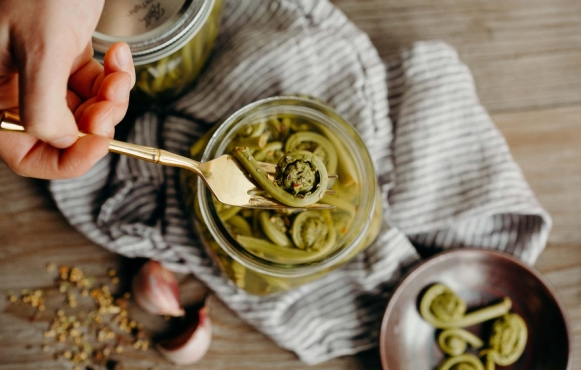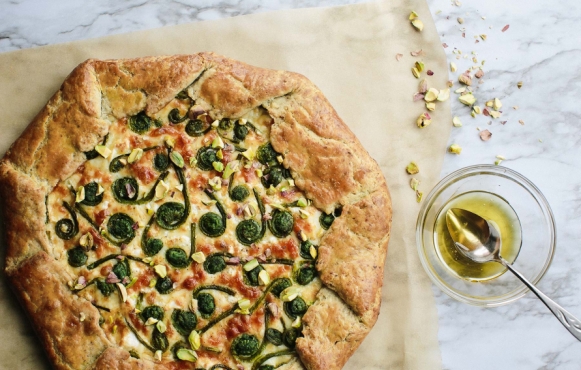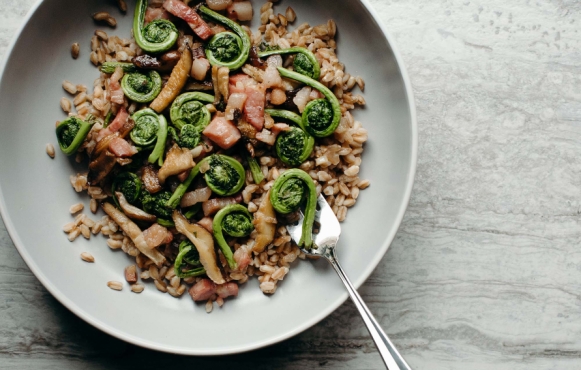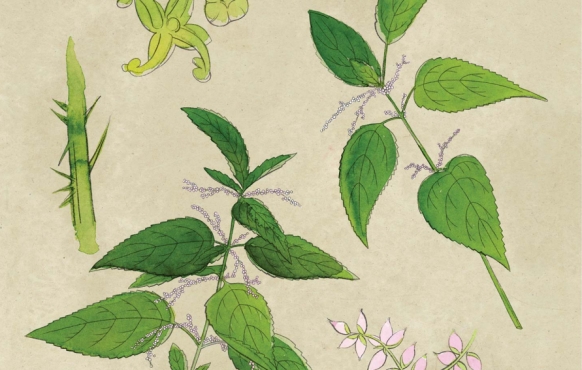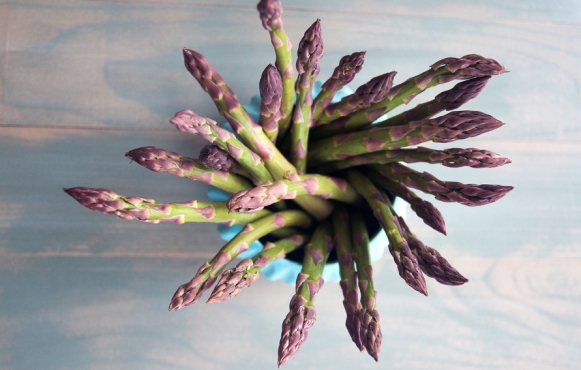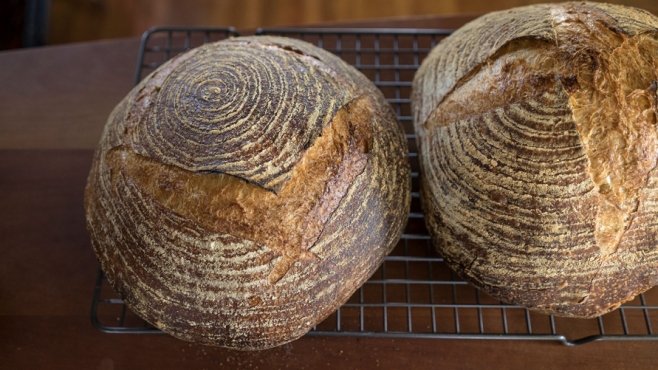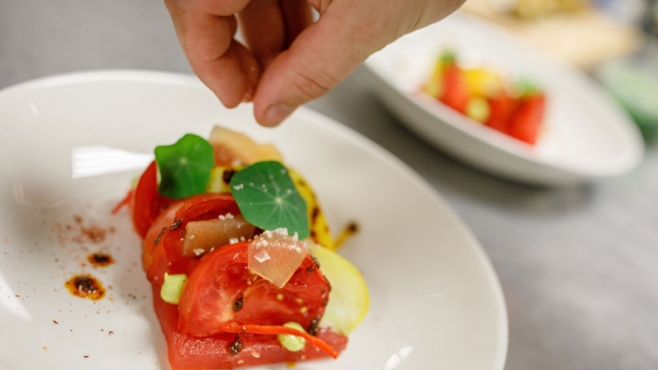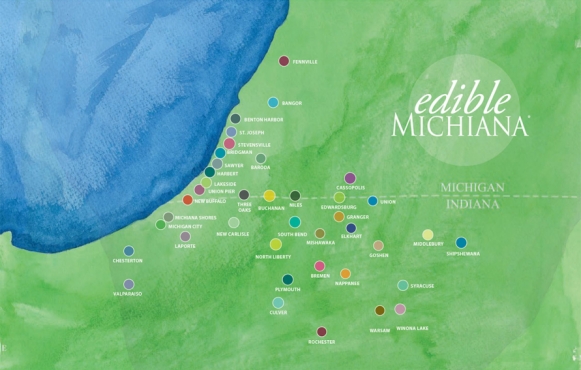Fiddlehead Ferns
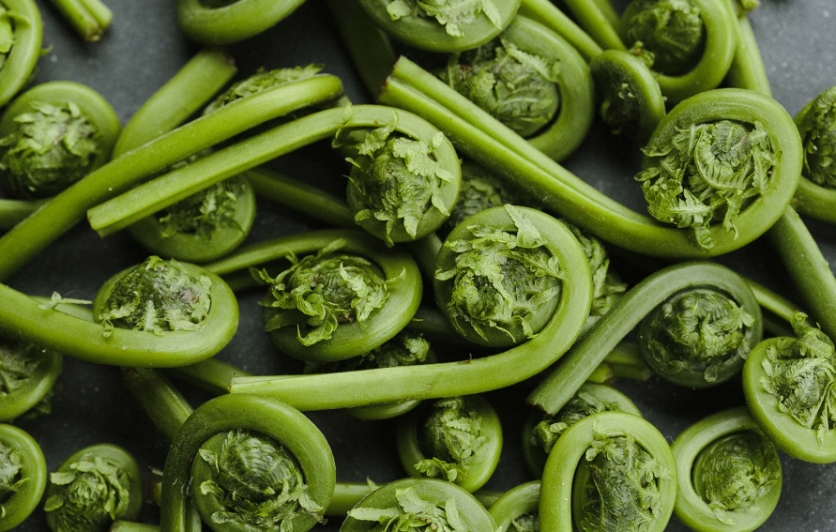
Fiddlehead ferns are the curly rich green shoots of a fern that emerge from the ground. Tightly coiled and adorned with a flaky brown protective coating from the season before, these whimsical and almost magical-looking baby plants can be carefully harvested and enjoyed using the proper techniques.
You’ll most likely find fiddlehead ferns emerging from damp, swampy soil under a forest canopy. But they are also a common perennial plant, growing in the shady corners of home landscaping. The flavor is reminiscent of green beans or asparagus, but it has its own wild and mild taste.
If you can get your hands on some fiddlehead ferns this spring, consider yourself lucky: There is about one week in the entire year that they can be harvested. Start looking for them mid-April; you should be able to harvest them at the end of April or beginning of May. These magical wild plants are the very definition of seasonal, and we can’t wait to get our hands on them this year.
Selecting
There are a few varieties of ferns in our area, so make sure you are harvesting and eating the “ostrich fern” (Matteuccia struthiopteris), because it is the safest variety for consumption. The ostrich fern stem will be smooth and hairless, with a deep U-shape groove. The brown flaky coating that easily brushes off is also a good indication that you’ve found the right variety. Harvest fiddleheads before they’re six inches tall, which is when they begin to uncoil and are no longer edible. Leave behind one or two fiddleheads from each plant to ensure another year of growth.
Storing
It is crucial to clean and cook fiddlehead ferns before consuming them because they contain small amounts of natural toxins that might cause stomach pain if eaten raw. Cooking also eliminates the unpleasant bitter taste they have when raw. Immediately after harvesting, submerge fiddleheads in cold water and carefully use your hands to remove any debris and brown flakes. Rinse and repeat until the water runs clear and no debris remains. They have the best flavor when eaten soon after harvesting, but you can wrap them tightly in plastic and keep them in the fridge for up to two weeks. Ferns should be cooked for at least five minutes before eating; the overall time will vary depending on the recipe. Blanching fiddleheads in boiling water for five minutes before following recipe instructions is the easiest way to ensure safety. For freezing, blanch for five minutes in boiling water and move to a bowl of ice water to cool. Dry them with a towel, label, and freeze for up to nine months.
Pairing
Allspice, almonds, asparagus, avocado, bacon, basil, beef, broccoli, Brussels sprouts, butter, capers, carrots, cashews, chickpeas, cloves, coriander, cream, dill, eggs, farro, feta, fish, garlic, ginger, goat cheese, green beans, honey, kale, lemons, limes, lentils, maple syrup, mozzarella, mushrooms, mustard, olive oil, olives, onions, oranges, pancetta, Parmesan, pasta, peas, pecans, pesto, pistachios, pork, potatoes, poultry, radishes, ramps, rice, salmon, sausage, sesame, soy sauce, spinach, tomatoes, vinegar, walnuts, wine.


